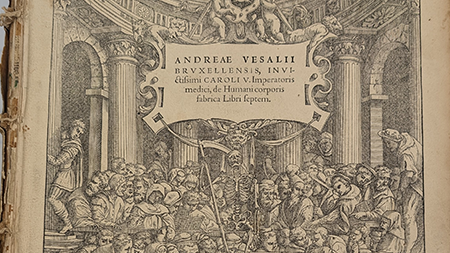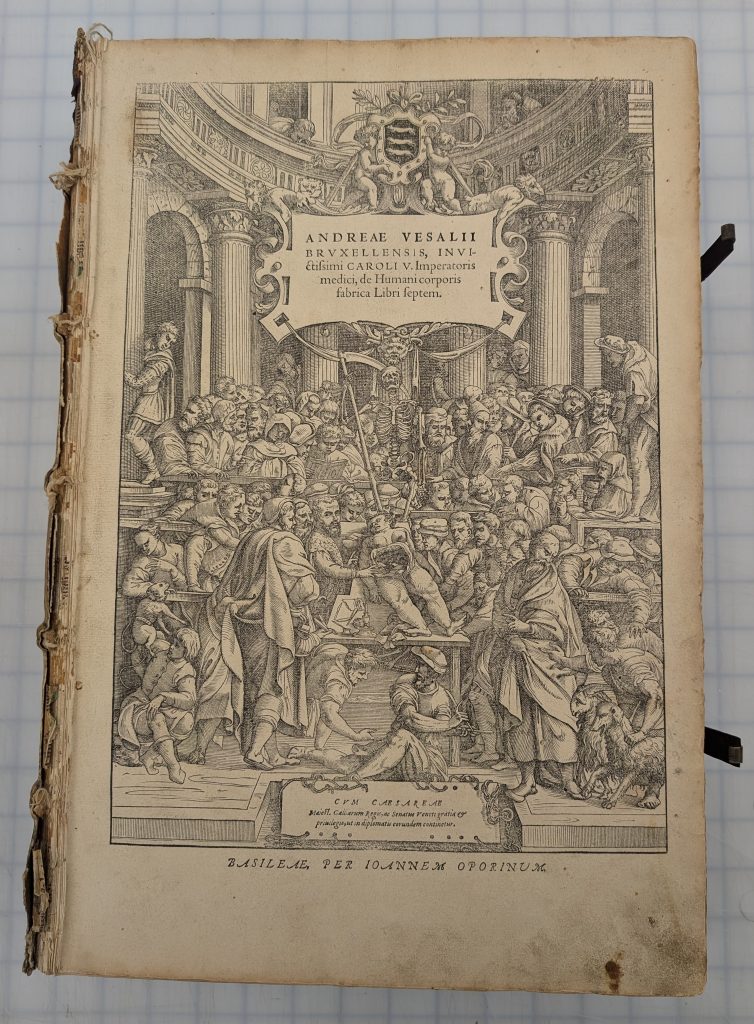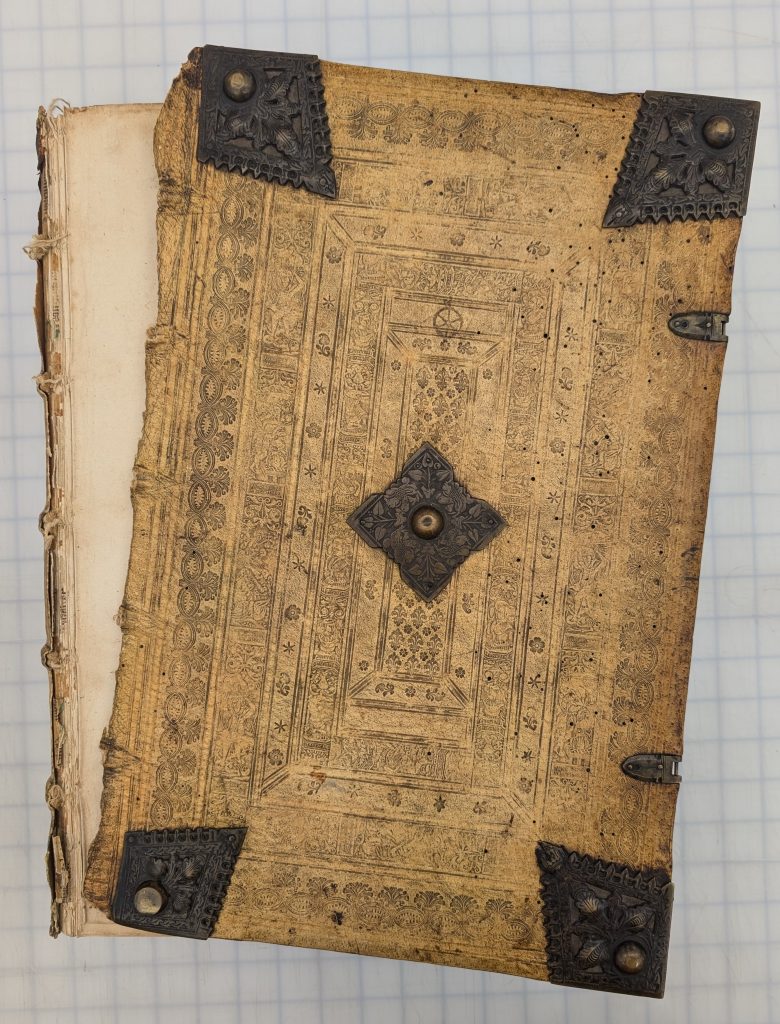Search for books, articles, and more
On the Fabric of the Human Body in Seven Books

Vesalius, Andreas. De humani corporis fabrica libri septem. Basel: Johannes Oporinus, 1543.
Selected for conservation by Jennifer Jarvis
When De humani corporis fabrica libri septem [On the Fabric of the Human Body in Seven Books] by Andreas Vesalius (1514–64) first appeared in print in 1543, it was an instant sensation. Vesalius’ text on many levels superseded the ancient and much repeated canonical authority of Galen of Pergamum (129-216/217 AD). The volume’s beautiful folio-size engravings offer unprecedented and minutely detailed studies of bones, muscles, blood vessels, nerves, abdominal viscera, thoracic organs, and the brain.
The book derives from the anatomist’s lectures at the storied medical school at the University of Padua, where he developed his preference of teaching anatomy based on the dissection of human corpses. Unusual for the time, rather than rely on a barber surgeon to conduct these dissections, Vesalius preferred to do much of the work himself. No comparable work on human anatomy had been published up that that time, making the De fabrica one of the most influential, and widely reprinted and imitated, works in the entire history of science.
This copy is of special interest for it also retains its early, and possibly original, monastic binding over wood boards, which is finely tooled and embossed with metal corners. The original price paid for the book is also recorded in the front free endpapers in a contemporary manuscript annotation.
Conservation Treatment
Repair paper as needed, create new extensions to current sewing supports, re-sew loose sections, and re-attach original boards and re-back with new alum-tawed spine.

